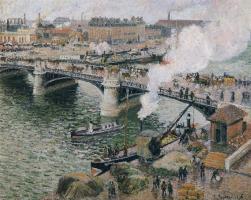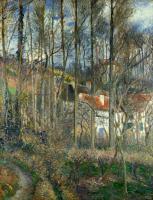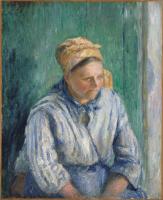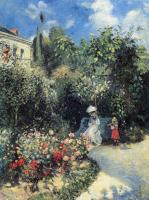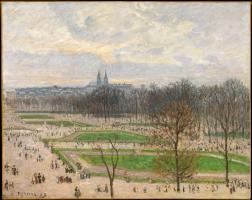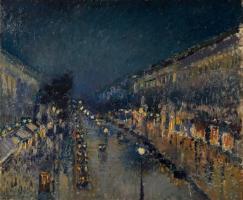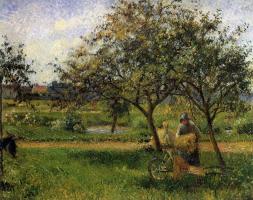Camille Pissarro
Camille Pissarro was born and brought up in Charlotte-Amalie, in the Danish West Indies, where his father had a general store. He was sent to school in France, encouraged to paint by a sympathetic art teacher, and found, on his return to the West Indies, that clerical work in the family business was more than he could stand. He left for Venezuela with an artist friend, and in 1855 he settled in Paris, to a life of painting and poverty.
A number of young Parisian painters, who came to be known as the Impressionists, formed a group in the 1870s. Their principal aim was to capture the fleeting effects of colour and atmosphere caused by the play of light and shade in the open air. The official Salons consistently scorned and rejected their work because it was unconventional and appeared unfinished by the accepted standards, and from 1874 the Impressionists held their own independent exhibitions. Pissarro was one of the founders of the movement. He was a little older than the others — Monet, Renoir, Degas and Cezanne among them — and was regarded almost as the honorary uncle of the group. He was a gentle man, full of warmth, enthusiasm and curiosity, and he believed in freedom and mild anarchy. He never compromised; nor did he ever attach blame in the frequent quarrels that broke out around him. He remained friends with everybody and was respected for his principles as much as for his art.
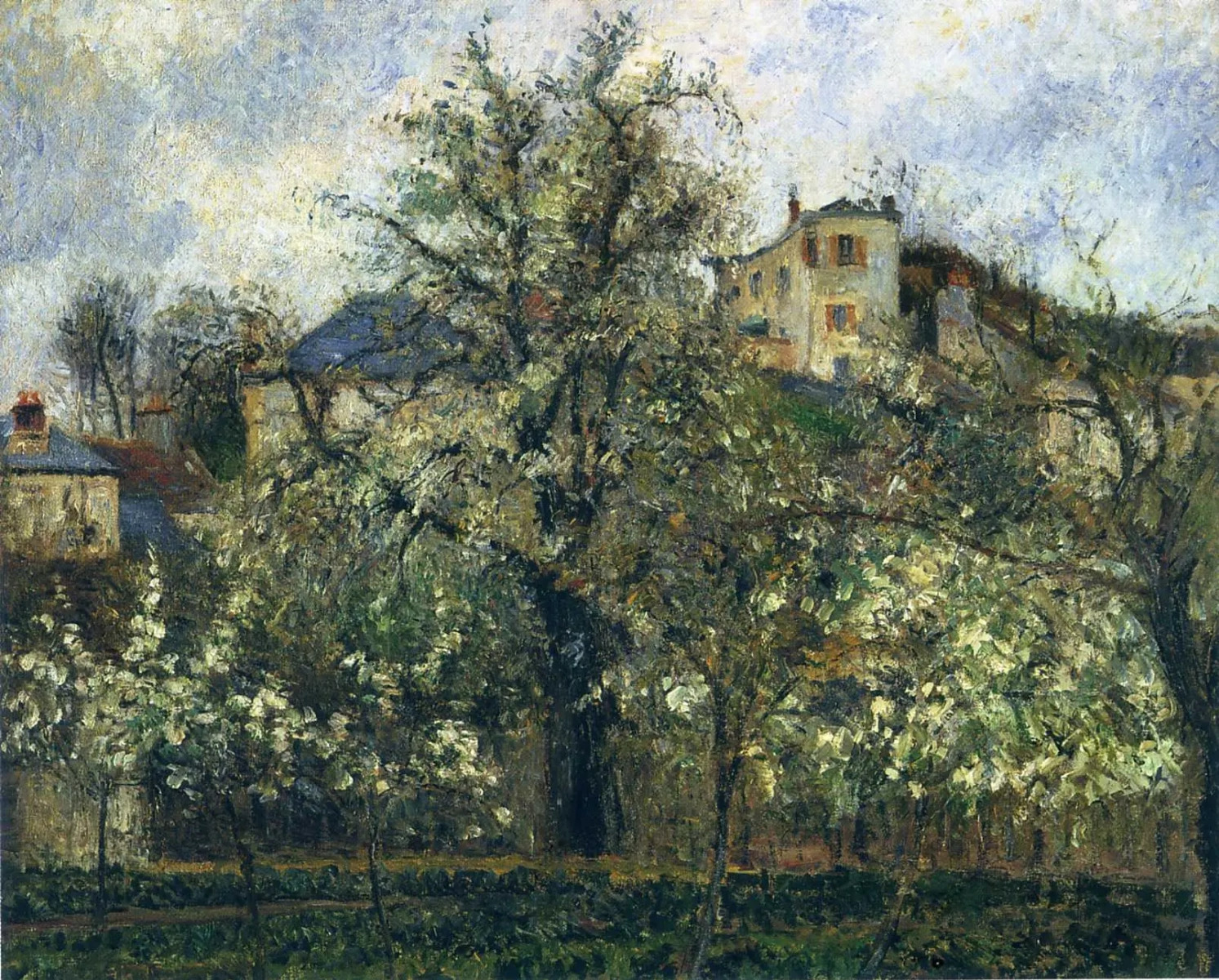 Pissarro was enormously prolific, and painted farming scenes, streets in Paris
or country villages, all with a spontaneity and life that captured his first
vivid impression of his subject. Garden with Trees in Blossom was painted in
the orchard behind Pissarro’s house, in the small village of Pontoise, near
Paris. The freshness of spring and new growth is perfectly conveyed by the
flurry of falling petals and the young green shoots under the apple trees. Blue
and red roofs of the village merge with feathery trees in the distance in the
small brush strokes that cover the canvas. The Impressionists’ interest in
light meant that sharp outlines disappeared as objects fused under the effects
of light and shade. Pissarro believed that every element in a picture should
be completely understood, and should work together so that the eye takes in the
whole scene at once, as it does in life. He declared that nature was ‘always to
be consulted’.
Pissarro was enormously prolific, and painted farming scenes, streets in Paris
or country villages, all with a spontaneity and life that captured his first
vivid impression of his subject. Garden with Trees in Blossom was painted in
the orchard behind Pissarro’s house, in the small village of Pontoise, near
Paris. The freshness of spring and new growth is perfectly conveyed by the
flurry of falling petals and the young green shoots under the apple trees. Blue
and red roofs of the village merge with feathery trees in the distance in the
small brush strokes that cover the canvas. The Impressionists’ interest in
light meant that sharp outlines disappeared as objects fused under the effects
of light and shade. Pissarro believed that every element in a picture should
be completely understood, and should work together so that the eye takes in the
whole scene at once, as it does in life. He declared that nature was ‘always to
be consulted’.
Cezanne worked with Pissarro at Pontoise, and sketched him, with his flowing beard, big hat and boots, a stick in his hand and his materials strapped to his back as he set off for a day’s painting in the country; and Cezanne said of him, ‘He of all painters most closely approached nature’. He painted the French country-side at every season of the year, from spring orchards to snow-bound winter landscapes, and demonstrates in all his work the intense joy he derived from it
 Like Millet and Daumier, Pissarro shared a profound respect for working people;
more than that, he was involved in socialist politics. Although he knew
hardship himself, manual work is never portrayed as harsh or demeaning. ‘Work
is a wonderful regulator of mind and body. I forget all sorrow, grief,
bitterness and I even ignore them altogether in the joy of working.’ In The
Wheelbarrow, a woman pauses with an armful of straw under what suggests a
triumphal arch, formed by the apple trees.
Like Millet and Daumier, Pissarro shared a profound respect for working people;
more than that, he was involved in socialist politics. Although he knew
hardship himself, manual work is never portrayed as harsh or demeaning. ‘Work
is a wonderful regulator of mind and body. I forget all sorrow, grief,
bitterness and I even ignore them altogether in the joy of working.’ In The
Wheelbarrow, a woman pauses with an armful of straw under what suggests a
triumphal arch, formed by the apple trees.
 The Côte des Bœufs at L’Hermitage is an example of a more complex painting,
both in its composition and execution.
The Côte des Bœufs at L’Hermitage is an example of a more complex painting,
both in its composition and execution.
The painting is dominated by a dense fabric of interweaving tree trunks and branches with thick scrub in the foreground. Beyond, a collection of neat buildings can be seen. There are also two figures to the left of the painting. The inclusion of figures in a landscape are characteristic of Pissarro’s work.
To create the textures of this piece, Pissarro applied the paint in a series of tiny brushstrokes. The paint was so thick in parts that the canvas had to be reinforced in order to bear the weight. This gives the work a highly textured surface that echoes the rough texture of the tree bark he depicts.
This scene was painted in L’Hermitage, a hamlet close to Pissarro’s home where he lived between 1866 and 1883. Pissarro painted a large number of canvasses in nearby Pontoise and the surrounding area, enjoying the wide range of rural subjects.


